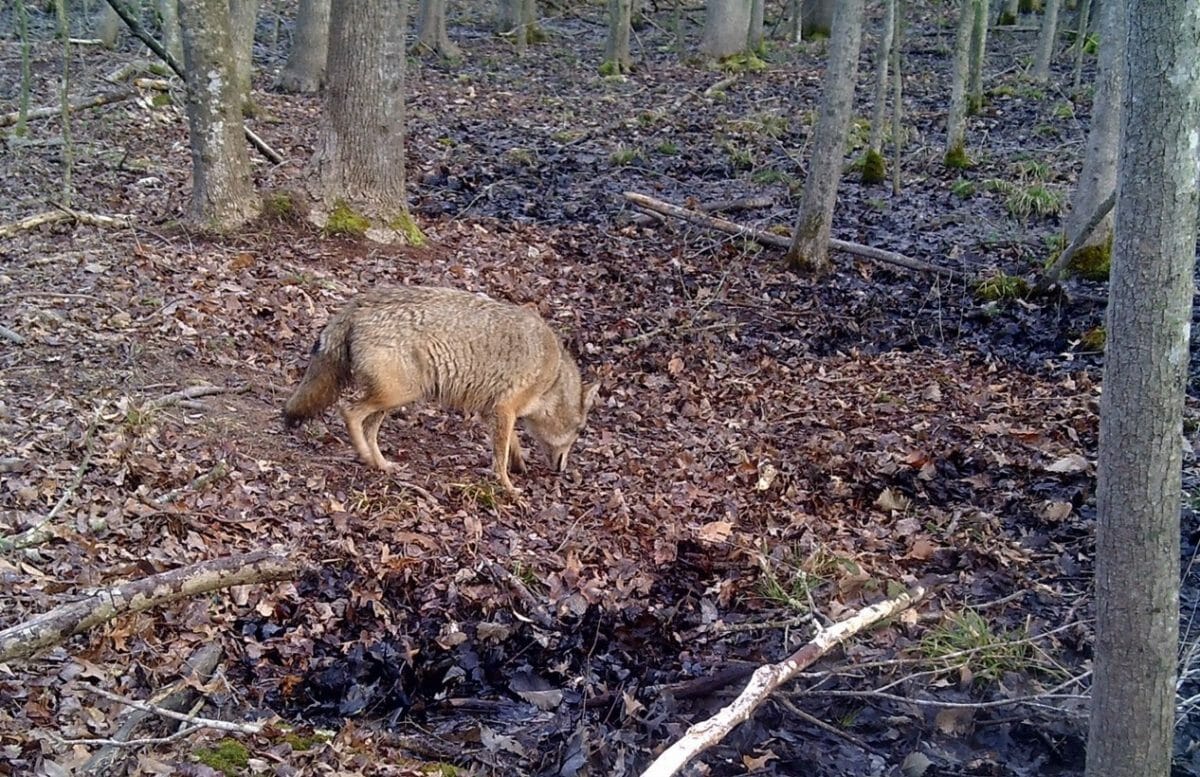News
The Eastern Coyote
January 13, 2020by: Scott McDaniel, Susquehannock Wildlife Society
The Eastern Coyote is one of our most controversial local wildlife species. It isn’t the return of a locally extirpated species like the Black Bear but the result of both a range extension of the Western Coyote and some small level of hybridization with both wolves and domestic dogs along the way, creating a larger version with some different adaptations. Around the time of European settlement, it is believed that only their larger canine cousin the wolf, and smaller foxes inhabited our region but likely not coyotes which have been more restricted to the western states and prairies. The more favorable habitat that resulted from the clearing of the landscape for farming and development, as well as the removal of the wolf and cougar, created an ecosystem vacuum that allowed the coyote to freely move into new areas without any fear or competition from larger predators.
A local myth that perpetuates to this day is that the coyote was introduced by the Federal Government at the Aberdeen Proving Ground to control rabbits or sometimes car insurance companies to reduce deer vehicle collisions but despite these being somewhat ridiculous ideas without evidence, the facts are that Maryland actually marks one of the final two states in the east for the expansion of coyotes to reach, first seen in 1972 in three other counties, as their path was well documented moving from both the north and south, somewhat meeting in the middle, with Delaware being noted as the final state for their arrival.
The Coyote has played a complicated role in human stories dating back millennia here in America, with Indigenous People coexisting with what they describe as a creator, glutton, or trickster. Later, starting with the settlers all the way to today, it had become the focus of centuries of focused yet unsuccessful multi-million dollar extermination efforts as they have been seen as a threat to game and livestock. This continues to this day whenever coyotes make an appearance in a community. Being largely nocturnal, they are not often seen but they and predators, in general, are the source of irrational fear. Coyotes primary food source is rodents and rabbits as well as deer that are most often scavenged rather than hunted as adults despite what many believe though it does occur, especially as fawns. Predators do change the behavior of prey such as deer so the absence of deer, which have become overpopulated and disrupt many forest ecosystems through overgrazing the understory, so sometimes that can suggest the deer are moving rather than lingering, not that they have been culled by coyote predators.

Throughout our trail camera surveys across Harford County, when coyotes are present, have always shown both species coinhabiting the same space along with others. Coyotes also eat birds, insects, and more fruit and vegetation than many would think. Livestock take can occur, as can that of small pets such as cats or dogs that are left outside, especially at night, but they are much rarer than you would believe by reading comments on social media.
While the howl of the coyote can invoke the feeling of wildness when heard in the rural parts of our region, these ever adaptable species are being observed more and more in our suburban areas and even cities. Negative Coyote encounters, just like most species of wildlife that try to avoid humans, can usually be prevented by securing sources of food such as trash, chickens, pets at night when they are most active. Coyotes can be safely hazed by making loud noises when seen or sprayed with a hose. Shooting Coyotes, while it can be done legally, does not usually solve the problem as coyote biology allows them to increase their litter size when their numbers get low and the more groups are broken up the more likely so-called rogue coyotes become the ones who are more opportunistic predators. We suggest that having what has become a top predator on the landscape is likely more of a positive than negative, filling an important niche that has been vacant for far too long.
